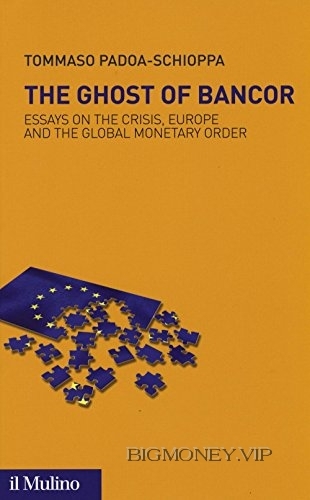The ghost of Bancor. Essays on the crisis, Europe and the global monetary order by Tommaso Padoa Schioppa

Part I. Central Banks and Global Monetary
Order
I.
The Crisis in Perspective: The Cost of Being
Quiet
Essay published in “International Finance” (vol. 11, n. 3, 2008, pp. 311-325).
With the view of causing an increase to
take place in the mass of national
wealth, the general rule is, that nothing
ought to be done or attempted by
government. The motto, or watchword of
government, on these occasions, ought
to be – Be quiet.
J. Bentham, Manual of Political Economy,
chapter 1.
1. Introduction
The crisis we are experiencing is not a single, isolated
illness, but rather the interaction of three separate illnesses,
each with its own features, dynamics and required treatment:
(a) the day of reckoning for the US external deficit, (b) the
bursting of the housing bubble and (c) the great fear. We can
say that (a) underlies (b), which in turn underlies (c). The three
components interact with each other in various ways,
ultimately producing a single overall disruption in the body of
the global economy; they are, however, distinct, and each
needs to be understood on its own. Therefore, let us consider
them one by one, in order to examine their respective causes,
symptoms and cures. Our understanding of the past, present
and future will be facilitated if we examine the deepest
component first and then proceed to the more superficial and
visible ones.
In most commentaries and debates, differences of opinion
revolve – implicitly or explicitly – around one key question:
should we think of the present crisis as the correction of a
wrong path or as a detour from the right path? In this
context, “right” and “wrong” should be given the positive
meaning of “sustainable”/“unsustainable,” not the normative
connotation of socially and politically desirable/undesirable.
According to the “correction view,” the post-crisis trajectory
for the global economy will have to be different from the pre-
crisis one, and the task of public policy is to help design and
implement the new path. According to the “detour view,” the
original trajectory does not need to be changed, and the task
of public policy is to help bring the economy back onto it. This
article takes the first view and argues that the correction will
have to be substantial.
2. Growth Without Savings
At the root of the crisis lies the “growth without savings”
model of the United States economy and the latter’s




